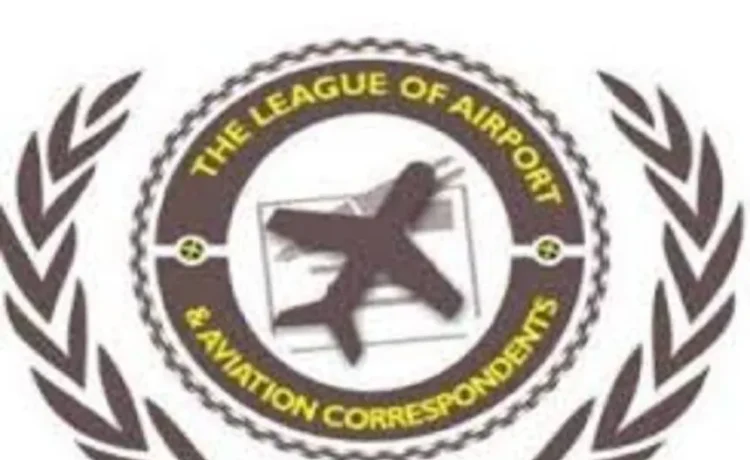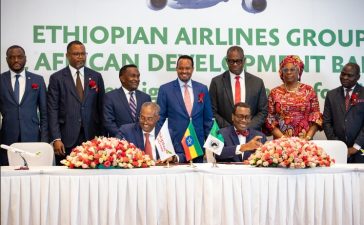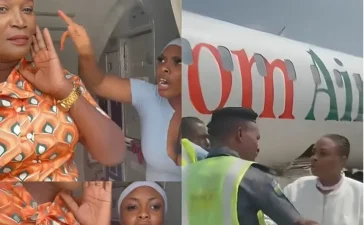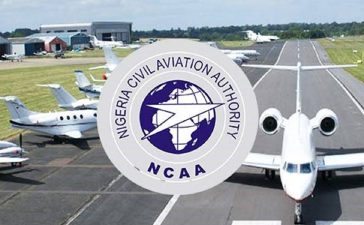Top professionals in the nation’s aviation industry have recently marshalled out recommendations regarding aviation financing in Nigeria. Stakeholders comprising airline executives, aviation agency regulators, cargo handling managers, aviation business leaders and even aviation and airline financiers were all at hand to deliberate on the theme; “Financing Aviation in Nigeria: The Risks, Opportunities and Prospects.”
Speaking at the 29th annual conference of the League of Airport and Aviation Correspondents (LAAC) which held August 2025 in Lagos, the Chief Executive Officer of Financial Derivatives Company Limited, Mr. Bismarck Rewane, in his presentation at the conference, highlighted principal weak points depleting the sector.
He said Nigeria lost $3.5 billion in aviation revenue between 2020 and 2022 blaming it on failing infrastructure, poor planning, and a fragmented sector. Pinpointing the drop in domestic passenger traffic to 11.5 million in 2024, which was a second consecutive year of decline, he said airlines are struggling, and passengers are losing faith. Delays, cancellations, and inefficient operations are pushing people away, he noted.
Rewane described Nigeria’s aviation sector as deeply fragmented, explaining that many agencies overlap in roles and make coordination weak. He stated that airlines, maintenance firms, and regulators work in silos, leading to waste and poor safety outcomes; adding that airports lack modern facilities and capacity. From his statistics, he stated that only 4 airports handle 92–96% of total traffic.
Further providing statistics surrounding the debilitating conditions in the industry, Rewane portrayed a too many, too little relationship between airlines and airports in Nigeria where there are 23 active domestic airlines, yet five airlines control 75% of the market. He said this imbalance limits competition and growth.
The economist pointed to state-owned airlines as another issue. He noted that states are racing to launch airlines and airports, when most lack commercial viability. Mentioning Ibom Air (Akwa Ibom, 2019), Cally Air (Cross River, 2021) and Enugu Air (Enugu, 2025) among these airlines, he also listed five new airports built by states between 2019 and 2024.
Comparing between the $1.5 billion profit of Ethiopian Airlines Andoni $19.8 million profit of South African Airways in 2014, Rewane drew the attention of participants at the event to what makes the difference between the airlines. He noted that modern fleets, revenue diversity as well as efficient hubs were significant differences, while asserting that in the case of Nigerian airlines, they relied on government bailouts, operated in low demand markets and faced mismanagement.
Among the retinue of troubles in Nigeria’s aviation, Rewane advocated for Nigeria to fix the system and not just the terminals by focusing on consolidation. He called for Lagos and Abuja to become strong, competitive hubs and emphasized that policy consistency is a key to ensuring investors will not stay away.
He also said the government should regulate—not run—aviation, advising them to stop building airports and running airlines. He warned that without change, Nigeria’s aviation sector will remain stuck in the past.
In an earlier speech and presentation at the LAAC conference, representing the President of Sabre West and Central Africa, Dr. Gabriel Olowo, the Chief Financial Officer at InterGuide Group, Mary Olowo-Sokeye had also proposed solutions to the aviation financing sector in Nigeria.
She urged airlines to abandon outdated funding models to strengthen liquidity and reduce operational risks. Calling for financial adaptability, Olowo-Sokeye encouraged that airlines should adapt financing to Nigeria’s volatile economy. “Sustainable aviation finance must balance risk and long-term viability,” she said. She also called for regulatory support in accessing global credit and financial tools.
Written by Phebean Ibuzugbe






